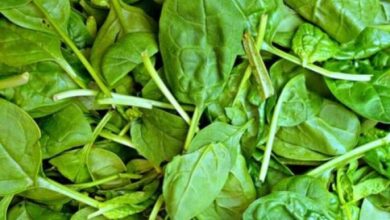How to Take Care of a Cyclamen and Make it Grow Strong
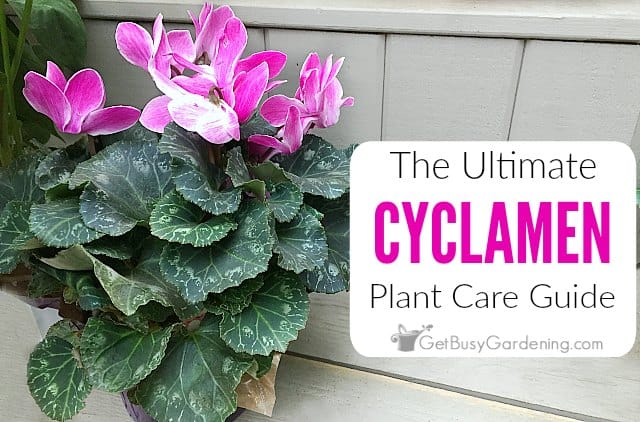
 Cyclamen or cyclamen is the name given to a genus of ornamental plants native to the vicinity of the Persian Gulf, in Asia Minor.
Cyclamen or cyclamen is the name given to a genus of ornamental plants native to the vicinity of the Persian Gulf, in Asia Minor.
This cultivar is highly prized for its foliage and many long-lasting flowers that increase each year.
Although it is an annual plant, it can last between 4 and 5 years. However, its cultivation is not an easy task because it must meet certain essential conditions.
For that reason we want to share with you this brief guide with the main care of the cyclamen so that you can be successful. We hope you find it useful.
What soil needs does the cyclamen have?
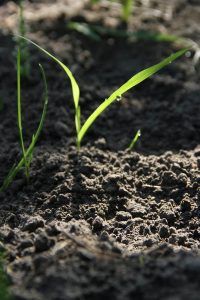 As such, the cyclamen is very tolerant of various types of soil.
As such, the cyclamen is very tolerant of various types of soil.
However, it tends to vegetate better in substrates rich in organic matter, humid, but well drained, with good aeration, oxygenation and heat conductivity.
A good choice of substrate would be the following proportion in the mixture: one part ground leaf soil, one part medium river sand, one part black mountain soil and one part rotten horse manure.
This composition is effective as it prevents puddles or excessive humidity in the substrate. Another important measure in cyclamen care is the pH level of the soil, which should be slightly alkaline, with 5.5 to 5.8 being the ideal amount.
However, it is necessary to monitor it periodically since the pH is not stable during growth.
How to make the cyclamen grow strong and vigorous?
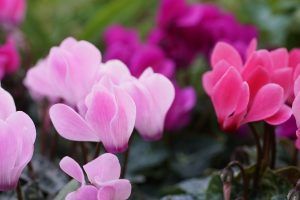 Cyclamen is a plant that is easy to manage if it is grown under the right conditions, in circumstances very similar to those of its cycle and natural environment.
Cyclamen is a plant that is easy to manage if it is grown under the right conditions, in circumstances very similar to those of its cycle and natural environment.
Here are some of the things you should consider if you want your cyclamen plants to grow strong and vigorous.
Lightning
The cyclamen is generally located in the shaded areas of the gardens since the maximum daily solar radiation must be maintained between 25,000 and 55,000 lux.
Adjusting according to the average daily temperature, the phase of the crop and the type of pot. However, on average, lighting of 40 thousand lux is recommended.
Temperature
For the cultivation of this plant, temperatures between 18° and 20°C are recommended during the summer and between 12°C and 15°C throughout the winter to ensure slow and adequate growth. On the other hand, sudden changes in temperature should be avoided, as well as temperatures below 10°C and those that exceed 23°C.
It is known that the cyclamen can tolerate temperatures of up to 30°C with a good irrigation system, however, it is preferable to manage the normal ranges.
Electric conductivity
Electrical conductivity (EC) is an important element since it measures the concentration of soluble salts in the substrate and its ability to conduct electrical current. For cyclamen, an EC of 0.75 to 1.25 mmhos is recommended.
Fertilization
Fertilizers must be applied at two specific times: at the first transplant and after the transplant for maintenance. In the first case, 2 kilograms of 15-10-15 compound fertilizer must be provided per cubic meter of substrate every 3 months.
In the case of maintenance fertilization, soluble fertilizers should be used, 1 or 2 grams per liter of water, applying 250 to 300 milliliters per pot.
What humidity does cyclamen need?
Humidity is a very important aspect in the cultivation of cyclamen. To cover the needs that the plant requires, it is necessary to maintain the humidity level between 50% and 60% and never exceed 85%. Likewise, good air circulation in the area must be ensured.
With regard to irrigation, the cyclamen needs a moist substrate, otherwise weak growth will occur and the risk of disease will increase. As a rule, it should only be watered until the substrate is half dry.
Is it necessary to prune cyclamen?
 In the case of cyclamen, pruning is done mainly for maintenance.
In the case of cyclamen, pruning is done mainly for maintenance.
Because it has a long bloom, some flowers wilt and die while others sprout.
In view of the above, it is necessary to remove the leaves, flowers and stems when they wither or begin to spoil.
This work prevents parasitic diseases and allows the plant to make good use of its resources to prolong its flowering.
How to prevent pests and diseases from appearing on cyclamen?
The best way to prevent pests and diseases from appearing is to take care of your health. For this, it is important to avoid excess nitrogen due to an incorrect dosage of fertilizer, excess temperature and low humidity, as well as sudden changes in temperature.
However, sometimes illnesses are unavoidable. The most common are Botrytis, Erwinia chrysanthemi rot, and Fusarium oxysporum wilt. Generally, these diseases are treated with sprays of zinc or copper sulfate and lime, zineb, among other measures.
With regard to pests, potential dangers come from cyclamen mites, thrips, spider mites, and whiteflies. In these cases, weekly reviews and control with chemical products such as dimethoate, abamectin and malathion are recommended.
Conclusions
The cyclamen is one of the few plants that has the ability to bloom during the winter and therefore has a reputation for being difficult to maintain, but if you closely follow the advice we have shared, your plant will grow successfully.
We hope that this brief guide to cyclamen care has been useful to you. For more tips, we invite you to continue reading our blog.
Bibliographic references
- https://www.mapa.gob.es/ministerio/pags/Biblioteca/Revistas/pdf_Hort%2FHort_1989_46_51_57.pdf
- http://repositorio.uaaan.mx:8080/xmlui/bitstream/handle/123456789/3969/T20323%20GONZALEZ%20GONZALEZ%2C%20ABIGAIL%20GABRIELA%20%20TESIS.pdf?sequence=1&isAllowed=y
- https://repositorio.ucundinamarca.edu.co/bitstream/handle/20.500.12558/1469/final%20ciclamen%20.pdf?sequence=2&isAllowed=y
- https://sakataornamentals.com/wp-content/uploads/sites/2/2018/06/Ciclamen-Schoneveld-Espanol-1218-SAKATA.pdf
- https://www.cyclamen.com/pdf/technews/201809/unexpected-heat-stress-es.pdf
- https://www.gob.mx/cms/uploads/attachment/file/96217/Cyclamen_monografias.pdf
- https://botanicalsciences.com.mx/index.php/botanicalSciences/article/view/995/690
Maybe you are also interested in:

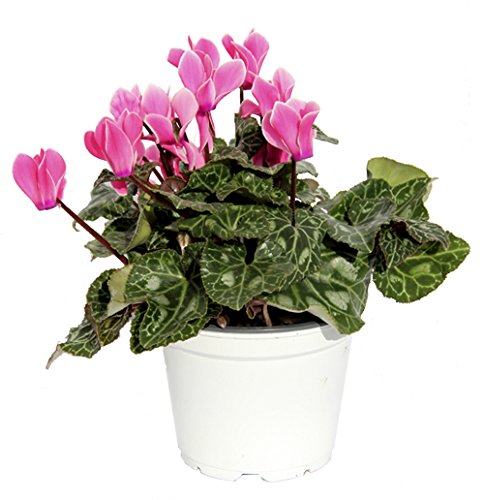
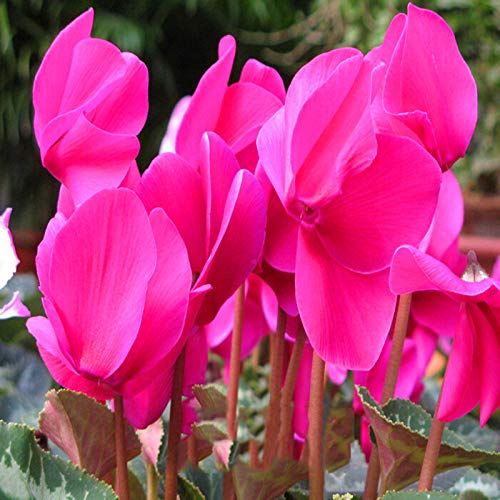

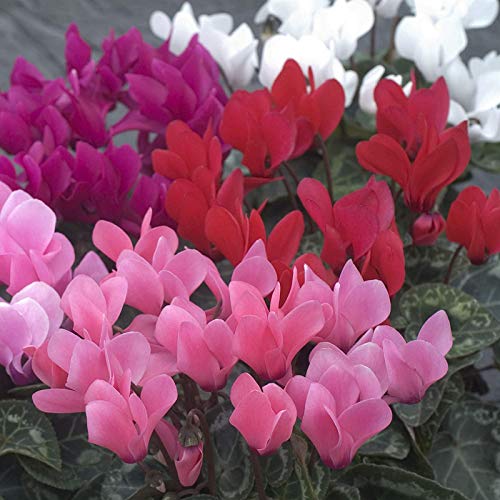
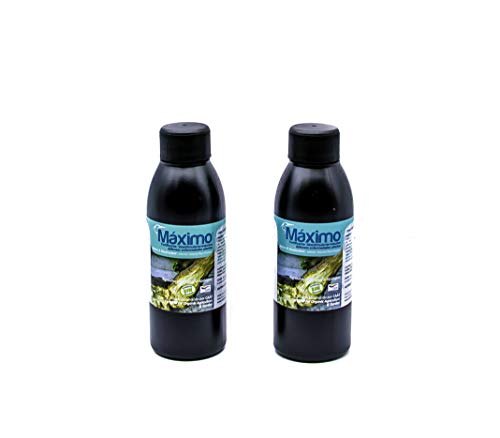

![Photo of How to Plant Oats in your Garden: [Guide, Care and Step by Step]](https://www.complete-gardening.com/wp-content/uploads/2022/08/how-to-plant-oats-in-your-garden-guide-care-and-step-by-step-390x220.jpg)
![Photo of The Ivy: [Planting, Irrigation, Care and Substrate]](https://www.complete-gardening.com/wp-content/uploads/2022/08/the-ivy-planting-irrigation-care-and-substrate-390x220.jpg)
![Photo of Pruning the Lady of the Night: [Importance, Season, Tools, Considerations and Steps]](https://www.complete-gardening.com/wp-content/uploads/2022/08/pruning-the-lady-of-the-night-importance-season-tools-considerations-and-steps-390x220.jpg)
